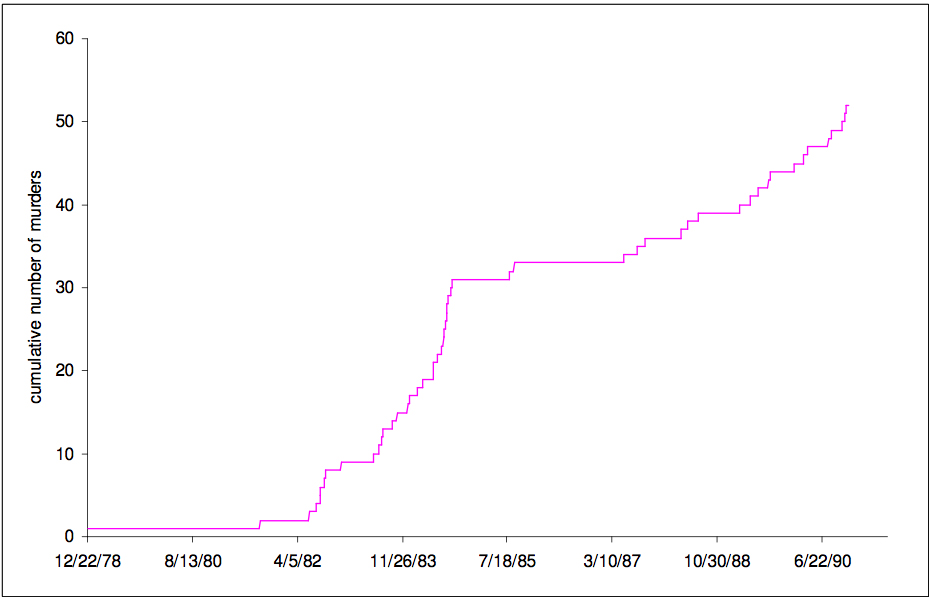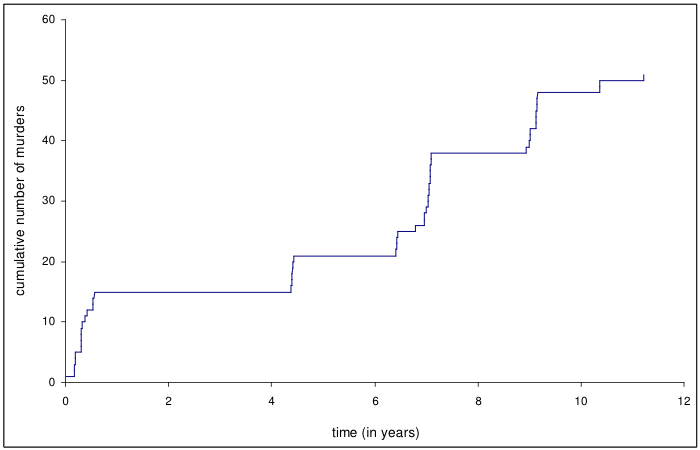
Roychowdhury.” align=”alignnone”]
A scientific paper published last week by two UCLA researchers shows that a mathematical pattern exists behind the 12-year killing streak of a well-known Soviet serial killer.
Professor Vwani Roychowdhury and researcher Mikhail Simkin, both from the electrical engineering department, claim that the time intervals between each murder committed by Andrei Chikatilo in Russia between 1978 and 1990 follow the “Devil’s Staircase” ““ a graphic curve that follows a specific pattern and appears visually in the shape of a staircase.
At first glance, the time intervals between each murder appear completely random.
But a graph comparing the cumulative murders over the murder history reflects a mathematical model.
Investigators could potentially predict when a serial killer will attack again based on the research, Roychowdhury said.
This could also help them with understanding cold-case files.
Another consequence of the research, Simkin said, is the discovery that there is a high probability that a murder will occur immediately after another.
That knowledge could also prove helpful to investigations, he added.
The time period between each murder varies between long and short intervals.
Chikatilo sometimes went days and other times several years between attacks.
This characteristic is representative of the “Devil’s Staircase.”
This information is likely common knowledge among criminal investigators, Roychowdhury said.
But he does not think concrete patterns have ever been formalized before.
The findings sparked interest in Andrew Perkins, a graduate student in clinical psychology at the University of Arizona and nephew of Roychowdhury, who works in the Forensic/Sex Research Lab there.
He said his colleagues are discussing whether this mathematical model and formula could also be found in the behavior of sex offenders and other impulse-driven criminal behavior.
Perkins also said the research could potentially be used in scientific profiling of serial killers.
In general, the research makes the behavior of serial killers more humanized, Roychowdhury said.
Psychologists and neuroscientists could further the research for the purpose of intervention, he said.
The two researchers have plotted the data for other serial killers who also fit the pattern.
They also plan to publish a revised paper that includes this data.
The “Devil’s Staircase” pattern has previously accounted for the frequency of natural phenomenon, such as earthquakes and avalanches, Roychowdhury said.
